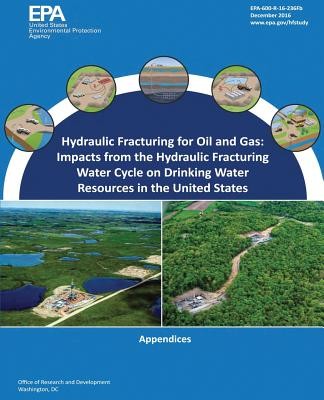
- We will send in 10–14 business days.
- Author: U S Environmental Protection Agency
- Publisher: CreateSpace Independent Publishing Platform
- Year: 2017
- Pages: 570
- ISBN-10: 1547257962
- ISBN-13: 9781547257966
- Format: 19.1 x 23.5 x 3 cm, softcover
- Language: English
- SAVE -10% with code: EXTRA
Hydraulic Fracturing for Oil and Gas (e-book) (used book) | bookbook.eu
Reviews
Description
Hydraulic fracturing is a technique used to increase oil and gas production from underground oil- or gas-bearing rock formations. Since the mid-2000s, the combination of hydraulic fracturing and directional drilling has become widespread, raising concerns about the potential impacts of hydraulic fracturing on drinking water resources. This concern is the focus of this report. In 2010, the U.S. Environmental Protection Agency (EPA) initiated a study of the potential impacts of hydraulic fracturing activities on drinking water resources. The EPA defined the scope of its study to focus on the acquisition, use, disposal, and reuse of water used for hydraulic fracturing-what we call the hydraulic fracturing water cycle. This was done in recognition that concerns raised about potential impacts were not limited to the relatively short-term act of fracturing rock, but can include impacts related to other activities associated with hydraulic fracturing. The EPA's study included the development of multiple research projects using the following research approaches: the analysis of existing data, scenario and modeling evaluations, laboratory studies, toxicological assessments, and five case studies. Throughout the study, the EPA engaged with stakeholders, including industry, the states, tribal nations, academia, and others, for input on the scope, approach, and initial results. To date, the study has resulted in the publication of multiple peer-reviewed scientific products, including 13 EPA technical reports and 14 journal articles. This report represents the capstone product of the EPA's hydraulic fracturing drinking water study. It captures the state-of-the-science concerning drinking water impacts from activities in the hydraulic fracturing activities water cycle and integrates the results of the EPA's study of the subject with approximately 1,200 other publications and sources of information. The goals of this report were to assess the potential for activities in the hydraulic fracturing water cycle to impact the quality or quantity of drinking water resources and to identify factors that affect the frequency or severity of those impacts. See also "Hydraulic Fracturing for Oil and Gas: Impacts from the Hydraulic Fracturing Water Cycle on Drinking Water Resources in the United States" main report.
EXTRA 10 % discount with code: EXTRA
The promotion ends in 16d.12:58:59
The discount code is valid when purchasing from 10 €. Discounts do not stack.
- Author: U S Environmental Protection Agency
- Publisher: CreateSpace Independent Publishing Platform
- Year: 2017
- Pages: 570
- ISBN-10: 1547257962
- ISBN-13: 9781547257966
- Format: 19.1 x 23.5 x 3 cm, softcover
- Language: English English
Hydraulic fracturing is a technique used to increase oil and gas production from underground oil- or gas-bearing rock formations. Since the mid-2000s, the combination of hydraulic fracturing and directional drilling has become widespread, raising concerns about the potential impacts of hydraulic fracturing on drinking water resources. This concern is the focus of this report. In 2010, the U.S. Environmental Protection Agency (EPA) initiated a study of the potential impacts of hydraulic fracturing activities on drinking water resources. The EPA defined the scope of its study to focus on the acquisition, use, disposal, and reuse of water used for hydraulic fracturing-what we call the hydraulic fracturing water cycle. This was done in recognition that concerns raised about potential impacts were not limited to the relatively short-term act of fracturing rock, but can include impacts related to other activities associated with hydraulic fracturing. The EPA's study included the development of multiple research projects using the following research approaches: the analysis of existing data, scenario and modeling evaluations, laboratory studies, toxicological assessments, and five case studies. Throughout the study, the EPA engaged with stakeholders, including industry, the states, tribal nations, academia, and others, for input on the scope, approach, and initial results. To date, the study has resulted in the publication of multiple peer-reviewed scientific products, including 13 EPA technical reports and 14 journal articles. This report represents the capstone product of the EPA's hydraulic fracturing drinking water study. It captures the state-of-the-science concerning drinking water impacts from activities in the hydraulic fracturing activities water cycle and integrates the results of the EPA's study of the subject with approximately 1,200 other publications and sources of information. The goals of this report were to assess the potential for activities in the hydraulic fracturing water cycle to impact the quality or quantity of drinking water resources and to identify factors that affect the frequency or severity of those impacts. See also "Hydraulic Fracturing for Oil and Gas: Impacts from the Hydraulic Fracturing Water Cycle on Drinking Water Resources in the United States" main report.


Reviews